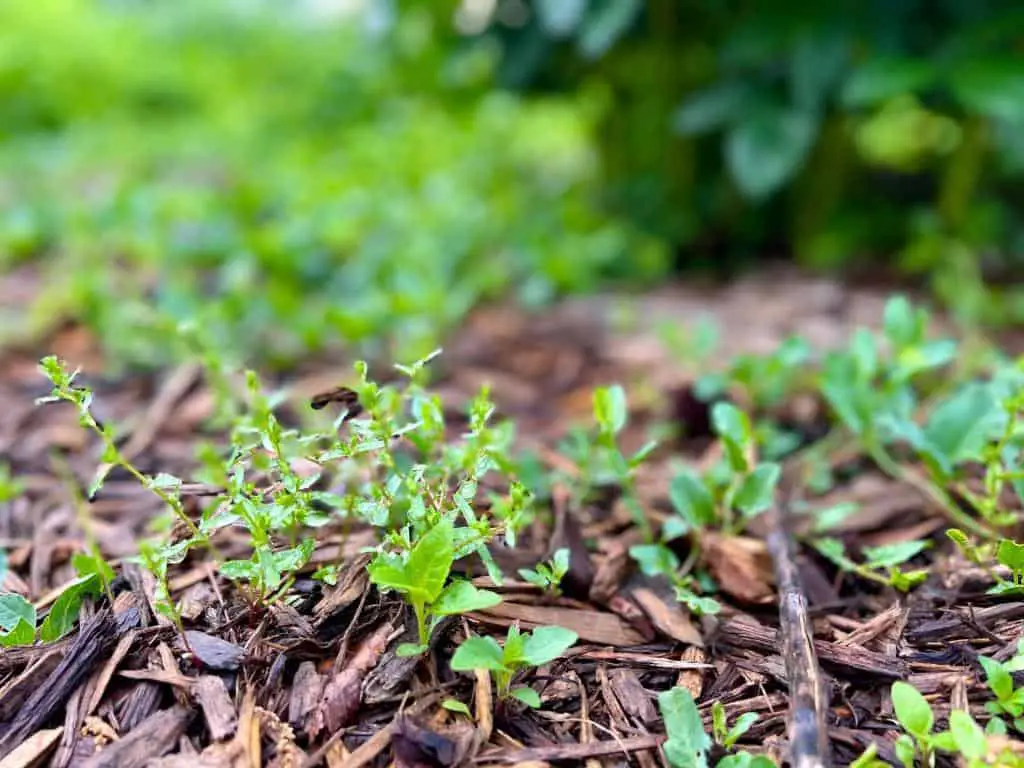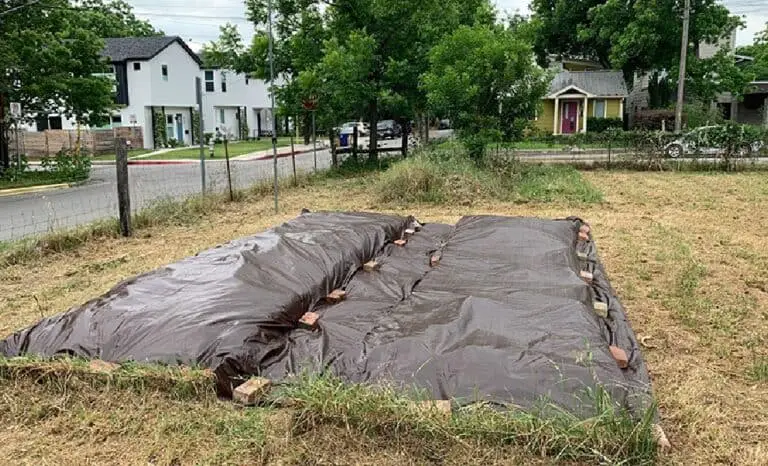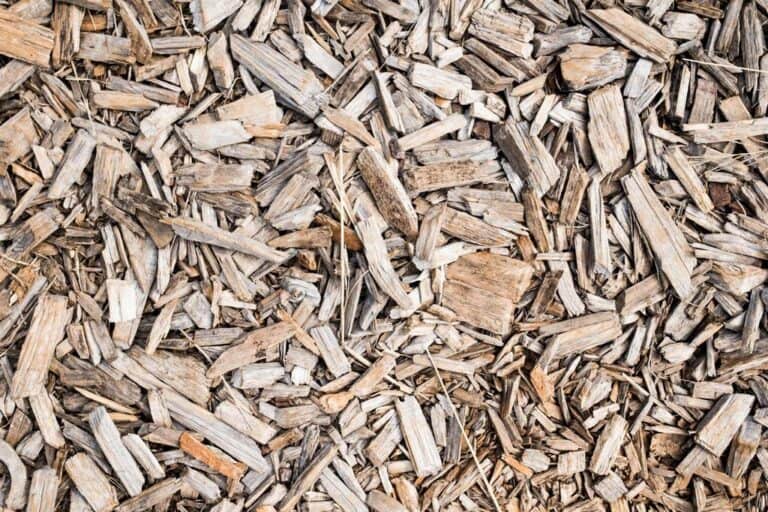Disadvantages of Mulching: What Problems Are Caused by Mulching?

If you’re an avid gardener, you’ve probably heard of the benefits of mulching. Mulching is a common technique that gardeners and landscapers use to encourage healthy plant growth and control weeds. It involves spreading organic material, such as wood chips, leaves, or grass clippings, over the soil around plants.
But did you know that there can be potential drawbacks to mulching as well? In this article, we’ll explore the disadvantages of mulching and the problems that can arise if it’s not done correctly.
From soil compaction to pest infestations, we’ll cover it all. So, whether you’re a seasoned gardener or just starting out, read on to learn about the potential problems caused by mulching and how to avoid them.
Disadvantages of Mulching
Mulching is a great way to protect the soil, keep water in the soil, and stop weeds from growing. However, it’s important to note that improper mulching can cause potential issues that can damage your plants and soil.
It’s important to understand the potential issues with mulching so that you can avoid them and ensure the health of your garden. Here are some of the problems caused by mulching:
1. Soil Compaction
One potential disadvantage with mulching is soil compaction. When mulch is applied too heavily or too often, it can create a layer of organic matter that becomes compacted over time. This can lead to waterlogging, poor drainage, and suffocation of the roots. Compacted soil can also deter earthworms and other insects that contribute nutrients and help break up the soil.
2. Over-Mulching
Over-mulching is a common problem, particularly among novice gardeners. It occurs when too much mulch is applied around plants. This can lead to a variety of issues, including:
- Reduced soil oxygen: When too much mulch is applied, it can restrict the flow of air to the soil. This can lead to reduced soil oxygen levels, which can harm plant roots and lead to root rot.
- Moisture retention: Over-mulching can also cause excessive moisture retention in the soil, which can promote the growth of harmful fungi and bacteria. This can cause plant diseases and even kill plants.
- Nutrient deficiency: Over-mulching can prevent nutrients from reaching the soil, leading to nutrient deficiency in plants.
3. Nutrient Imbalances
Another issue that can arise from improper mulching is nutrient imbalances. Mulch can affect the soil’s pH level, which can lead to nutrient deficiencies or toxicities in your plants. Additionally, the decomposition of organic matter in the mulch can cause nitrogen depletion in the soil, which can stunt plant growth.
4. Weed Growth
Mulching can help control weeds by preventing them from getting the light they need to grow. However, if not done properly, mulching can actually promote weed growth. This can happen when:
- Weed seeds are present in the mulch: If the mulch contains weed seeds, they can germinate and grow, leading to weed infestations.
- The mulch is not thick enough: If the mulch layer is too thin, it may not effectively prevent weed growth.
5. Pests and Diseases
Mulch can provide a safe haven for pests and diseases, particularly if it’s not properly maintained. Here are some of the problems that can arise:
- Pest infestations: Mulch can provide an ideal habitat for pests such as slugs, snails, and insects. These pests can harm plants and even destroy entire gardens.
- Disease spread: Mulch can also promote the growth and spread of plant diseases, particularly if it’s not properly composted. This can lead to the death of plants and the spread of diseases throughout the garden.
6. Aesthetics
While not a serious problem, the aesthetics of mulch can be a concern for some gardeners. Some people find mulch unattractive and prefer a more natural look for their gardens.
Proper Mulching Techniques to Avoid Problems
Mulching is a simple and effective way to improve your garden’s health and appearance. However, improper mulching can cause several problems, such as root suffocation, nutrient depletion, and moisture buildup, to name a few. Therefore, it is essential to follow proper mulching techniques to avoid these problems.
One of the critical factors to consider when mulching is the depth of the mulch layer. Applying too much mulch can suffocate the plant roots, leading to stunted growth and even death. On the other hand, if you don’t use enough mulch, you might not get the benefits you want, like keeping weeds down and water in the soil.
Generally, a mulch layer that is two to four inches thick is sufficient for most plants. However, some plants, such as succulents and cacti, prefer a thinner layer of mulch, while others, such as tomatoes and peppers, benefit from a thicker layer of up to six inches.
Another important consideration is the type of mulch you use. There are several types of mulch available, including organic and inorganic. Organic mulches, such as bark, wood chips, and leaves, are made from natural materials that break down over time, enriching the soil and providing nutrients to the plants.
Inorganic mulches, such as gravel, stones, and plastic sheets, do not break down and do not provide any nutrients. However, they can be more effective at suppressing and covering weeds and retaining moisture. Therefore, it’s essential to choose the right type of mulch based on your garden’s needs and the plants you’re growing.
In addition to the depth and type of mulch, the method of application is also crucial. Mulch should be applied in a thin, even layer, leaving a small gap around the plant stem to prevent moisture buildup and stem rot.
Avoid piling the mulch against the plant stem or trunk, as this can cause damage and invite pests and diseases. Also, make sure to leave some space around the plants to allow for air circulation and prevent the buildup of excess moisture.
Maintaining your mulch is another critical factor in avoiding problems caused by mulching. Over time, organic mulches break down and can become compacted, reducing their effectiveness and promoting weed growth.
So, it’s important to turn and aerate your mulch often to help it break down and keep it from getting too hard. You can use a garden fork or rake to fluff up the mulch and remove any weeds or debris that may have accumulated. This will also help to keep the mulch looking neat and tidy.
Finally, it’s essential to inspect your mulch before applying it to your garden. Some mulches may contain and spread weed seeds, invasive species, or harmful chemicals that can harm your plants and the environment. So, make sure to buy mulch from a reliable source and carefully inspect it before you use it. Also, if you’re using organic mulch, make sure it’s free of any diseases or pests that can spread to your plants.
Tips for Avoiding Problems Caused by Mulching
To avoid the problems caused by mulching, it’s important to follow some basic guidelines:
- Don’t over-mulch: Apply a layer of mulch that is 2-4 inches thick, and avoid piling it up against plant stems or trunks.
- Choose the right type of mulch: Select a mulch that is appropriate for your plants and garden conditions. For example, if you have acidic soil, choose a mulch that is alkaline.
- Maintain your mulch: Regularly turn and aerate your mulch to prevent it from becoming compacted and to promote decomposition.
- Inspect your mulch: Before applying mulch, inspect it for weed seeds, invasive species, and other contaminants.
- Consider alternatives: If you’re concerned about the disadvantages of mulching, consider alternative methods, such as using cover crops, using weed barriers, or hand-weeding.
Conclusion
Mulching is a common gardening and landscaping technique that can help control weeds, keep water in the soil, and make the soil better. However, there are some issues that come with mulching as well, such as overmulching, weed growth, pest and disease problems, improper mulch selection, and aesthetic issues.
You can avoid these problems and still get the benefits of mulching by following some simple rules and thinking about other options.






